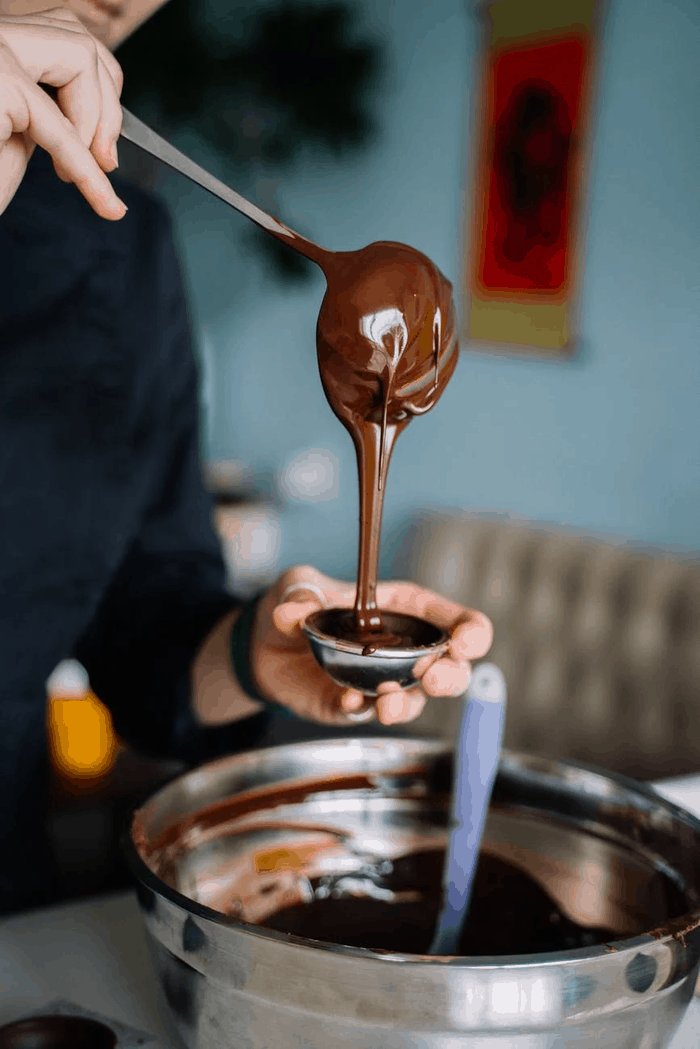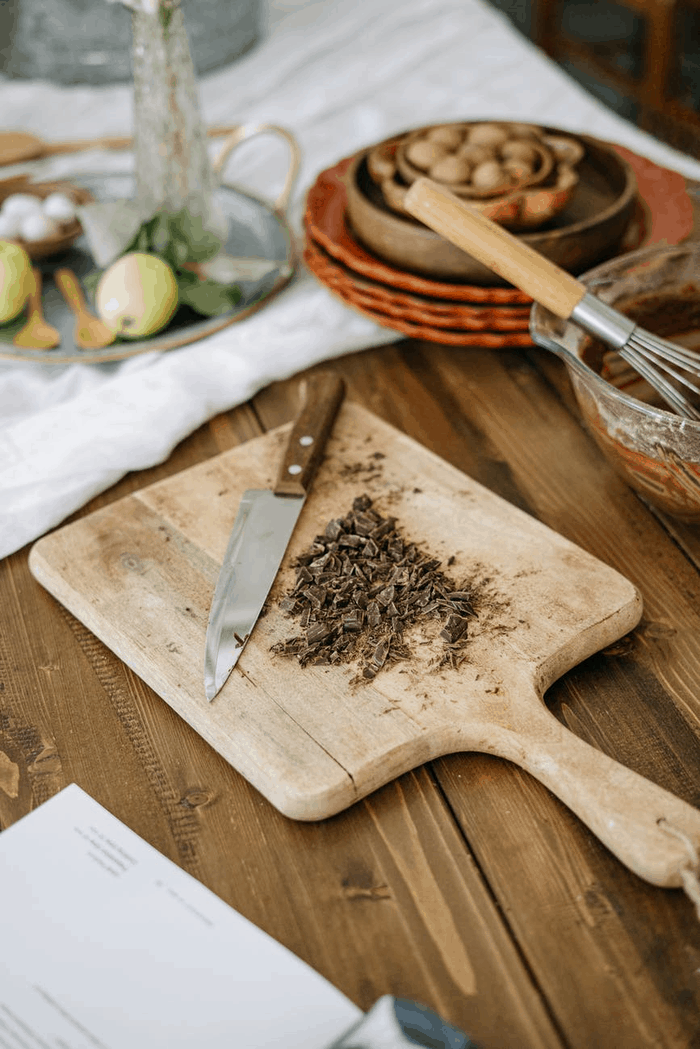5 Ways to Substitute Double Boiler
A double boiler is often needed in a recipe (for example, when melting chocolate). Since you require an external source of heat to melt chocolate; it can’t be direct. As a result, you should avoid using a microwave or a conventional oven.
This is especially important when melting chocolate since it is extremely temperature-sensitive and needs a soft, indirect source of heat to melt evenly and maintain a silky texture. However, there is one minor issue: you do not have a double boiler. What exactly is a double boiler? That isn’t to say that you have to cook it twice.
What is a Double Boiler
A double boiler is a very useful item that most cooks and individuals who like cooking gourmet food have in their kitchen cupboard. It is a must-have for melting chocolate and preparing delicate sauces and soups without burning them. It is made up of two saucepans that are stacked one on top of another and are designed to fit seamlessly.
Best Five Double Boiler Substitutes
Don’t fret if you don’t find a double boiler! Make a do-it-yourself double boiler with things you already have on deck by channeling your own crafty chef.
Two Pot Method
Wish to conveniently use a double boiler replacement if you don’t have a double boiler in your kitchen? But still, need to cook anything with indirect heat? The Two-Pot Method is a lifesaver. Just make sure the top pot fits snugly to prevent steam from escaping and it from wobbling and eventually falling off. The two selected pots should be roughly the same size for this approach to work. Place the heavier or larger pot on the bottom and the lighter or smaller pot on top.
- Cover a pot halfway with water, bring to a boil, and then reduce to low heat.
- After that, place another pot on top of it and fill it with whatever you would like to serve.
- Stir periodically until all is warm, sweet, and ready to eat.
- Note that the pots will be very hot until they are finished, so treat them carefully and move them from the cooktop with heat-resistant oven gloves.
Note: If you are going to use this approach, make sure that there is enough room between the mixing bowl and the simmering water. The water should not come into contact with the bowl. If your bowl comes into contact with the water, it can pass too much heat, turning your hollandaise sauce into scrambled eggs or destroying your melted chocolate.

Mason Jar Technique
Did you know that a mason jar may be used as a replacement for a double boiler?
- Fill a pot halfway with water and bring to a low simmer.
- Remove the lid from the glass mason jar and set it down.
- Place the mason jar in the simmering water
- Tada! A double boiler inside a mason jar!
Heat Proof Mixing Bowl and a Pot
I am sure that you almost always have a glass, pyrex, or stainless steel metal bowl in your kitchen. But, note that it must be heatproof. When you don’t have a double boiler, this double boiler strategy is one of the better choices.
Often, pick a mixing bowl with a slightly tight seal over the container to prevent steam from escaping and unintentionally burning you. It must not be too close because this could trap steam and allow it to build up, potentially resulting in an accident and a chaotic kitchen!
- Place the mixing bowl on top of a regular pot found in the kitchen.
- It is essential to use a wide pot so it has a larger surface region, which ensures even melting. The mixing bowl should be larger than the pot to sit on top of it and not drop in.
- Fill the pot with enough water to cover it by an inch
- Then bring it to a boil before lowering the heat to allow it to simmer.
- The heat-safe glass bowl can now be placed directly on top of the bath.
- The steam from the water will heat the bowl, so don’t think about the glass clinging to the pot.
- Place the product you want to melt into the glass bowl. For instance, chocolate. Remember that chocolate melts even quicker in the double boiler if you cut it into tiny chunks. And ensure you don’t have some water in your glass bowl by accident.
- The mixing bowl will come into contact with the water in the bottom pot, but it is best if it stays above it to some degree.
- And use a piece of aluminum foil, a pan lid, or maybe even a large ceramic plate to shield the mixing bowl comprising the food object.

Microwave
Few experts recommend using a microwave, but only under such circumstances. For example, if you don’t have a double boiler, you can use a microwave. For instance, if you only need to melt a tiny amount of chocolate for a few seconds, you can use the microwave process. For greater productivity, I would suggest you use other alternatives.
Bain Marie Method
The words double boiler and bain-marie are frequently used synonymously but they are two different tools for gentle heating. The double boiler uses steam to provide heat and is frequently used to prepare delicate sauces or melt chocolate. A bain-marie, also known as a water bath, places the cooking container in close contact with hot water, which is good for keeping food warm or baking egg-based recipes.
It is important to keep an eye on your mix to make sure it doesn’t burn! Every few seconds, get it out of the microwave and mix it. Stop the microwave until the product is fully cooked so it can begin to heat until you remove it. It is worth noting, though, that microwaves heat the ingredients rapidly, while a double boiler melts it slowly.
- In the oven, place a big, flat cooking vessel.
- Choose a big oven-safe roasting dish or another container with high sides. This must be big enough to accommodate the smaller dish/dishes, with almost twelve inches (2.5–5 cm) of space across the rim for water circulation.
- Put this dish in the oven right now, so once it is packed with water, it will be hard to move.
- Before you cook, preheat your oven as per your recipe’s instructions.
- In the baking bowl, place a towel or a silicone baking sheet. When pouring in water, ramekins and other tiny containers can slip against the baking dish’s surface. This can be avoided by using a rolled towel or a silicone baking sheet. This will also offer additional insulation, but this is seldom required.
- In the larger tub, place the smaller ones. In the big pot, position the pan or ramekins that hold your bowl. If you are using several bins, nestle them in the middle to save them from rolling around. This technique works well for custards, flans, cheesecakes, and other egg-based baked treats.
- Fill the bain-marie halfway with hot water.
- Get the water to a boil, and gently drain it into the bigger pan till it scales one-third to halfway up the sides of the smaller pans.
- To stop splattering water on your meal, pour carefully. Pour from a kettle or measuring cup spout if one is convenient.
- Heat until the water is just simmering. Implement the recipe’s baking guidance, but keep an eye on the bain-marie. The water should be just about to boil.
- Decrease the oven temperature if it begins to simmer.
- Load in hot tap water to refill the level of water if it runs out when cooking.
- Carefully start by removing the smaller containers. Tongs covered in silicone or rubber make removing the hot ramekins a breeze.
- Wrap big rubber bands across metal tongs to upgrade a pair, or simply remove the containers cautiously with potholders.
- Open the oven door and keep the larger jar inside until it is nice enough to handle. And you are done, voila!
Safety Tips to Keep in Mind
Since safety always comes first, here are some of my suggestions to help you out.
- Do not fill the water-filled pot more than midway. The water will end up boiling up and spattering over.
- Ascertain that the stovetop heat is set to maintain a steady simmer. And do not keep the water boiling the whole time.
- Since the kitchen appliances you are using would be very hot, use heat proof oven gloves to remove your food from the cooktop.
- If you are using the mixing bowl process, make sure the bowl and pot are not too close together, or the steam will get stuck and start building up, eventually resulting in a mess.
In conclusion, have you ever come across the word "double boiler" in a tutorial and started wondering what it meant? A double boiler is a kitchen appliance made up of two fitted saucepans stacked one on top of another. Now I am sure that, by now, you know that you may use a variety of alternatives for a double boiler.
You can still make citrus curds, caramels, and desserts without a double boiler! Using a heat proof mixing bowl on top of a pot of simmering water is among the most popular double boiler alternatives. I hope you enjoyed reading this article! Let me know all your thoughts and queries in the comments section below!

